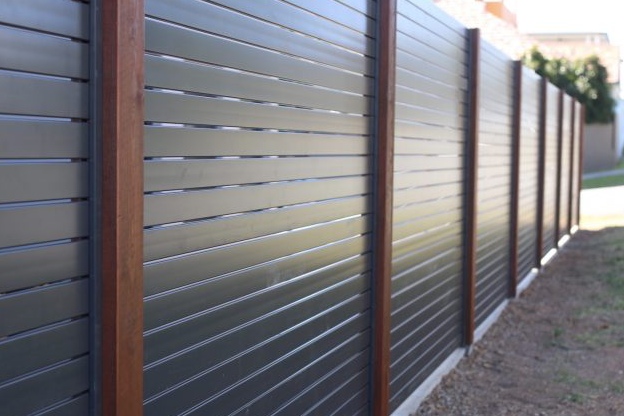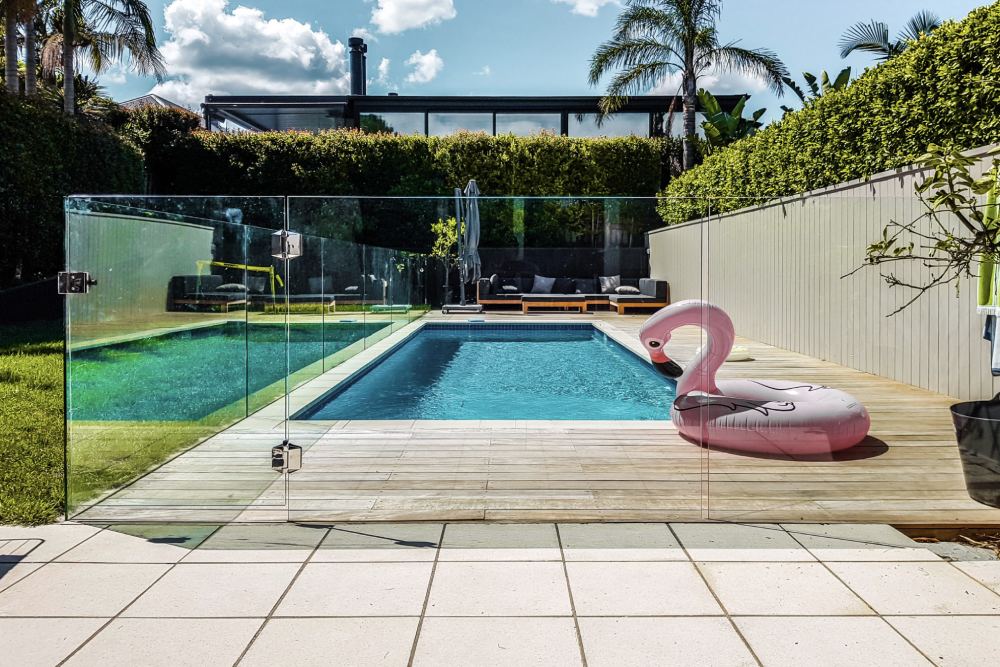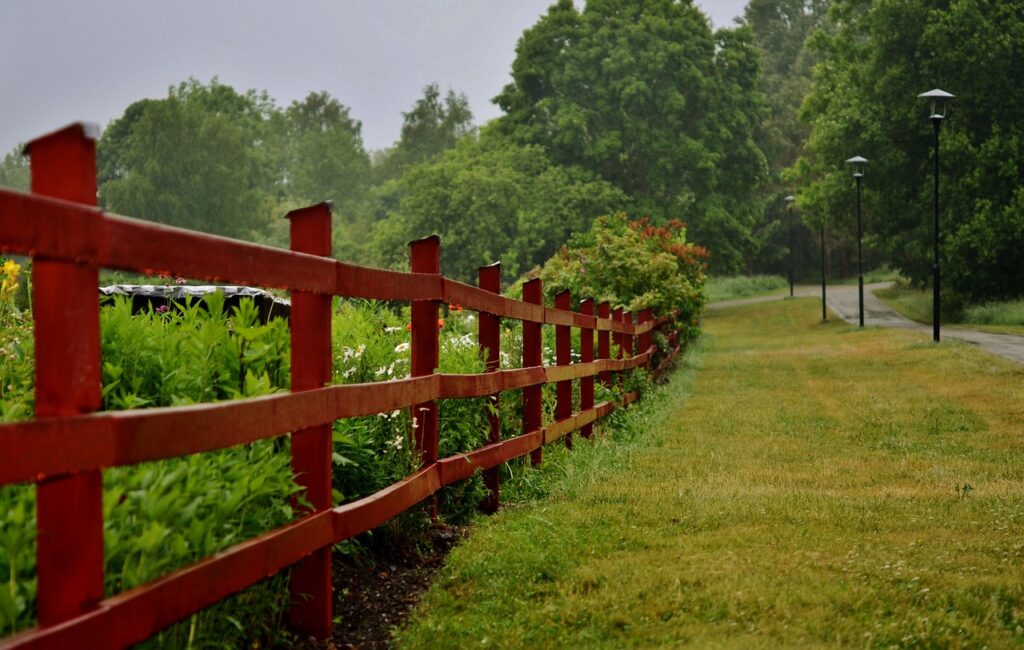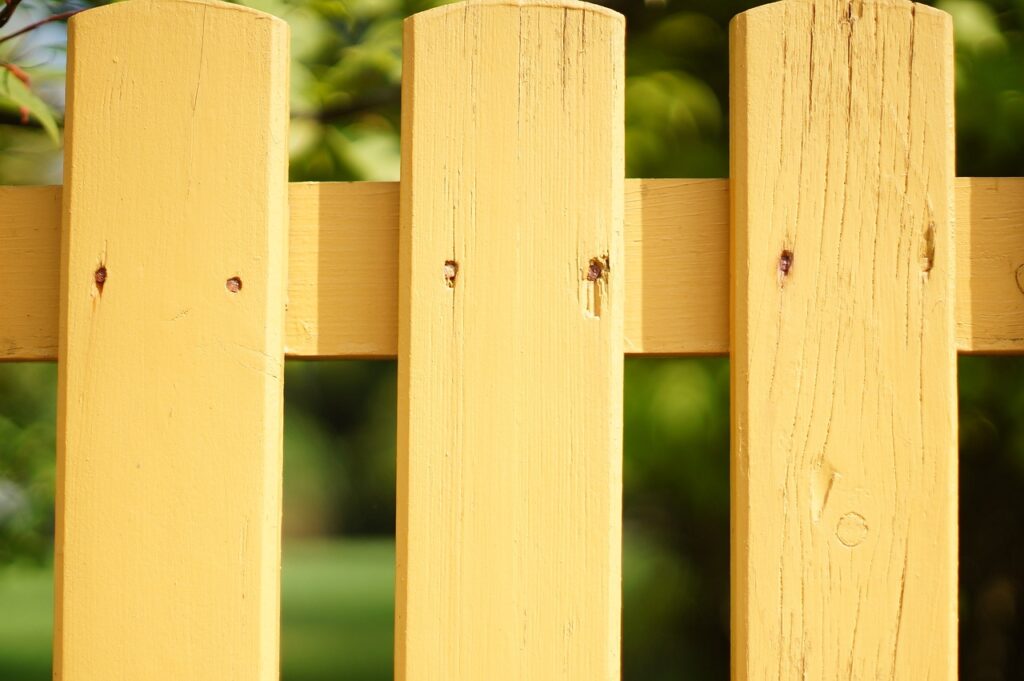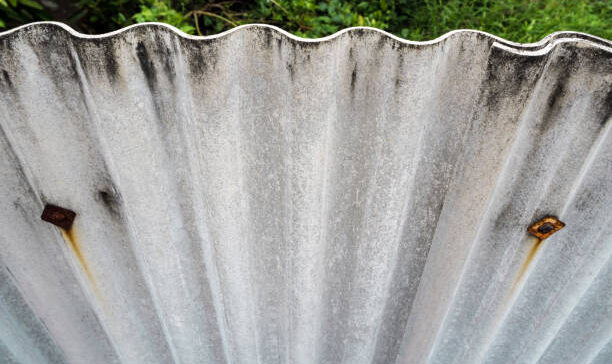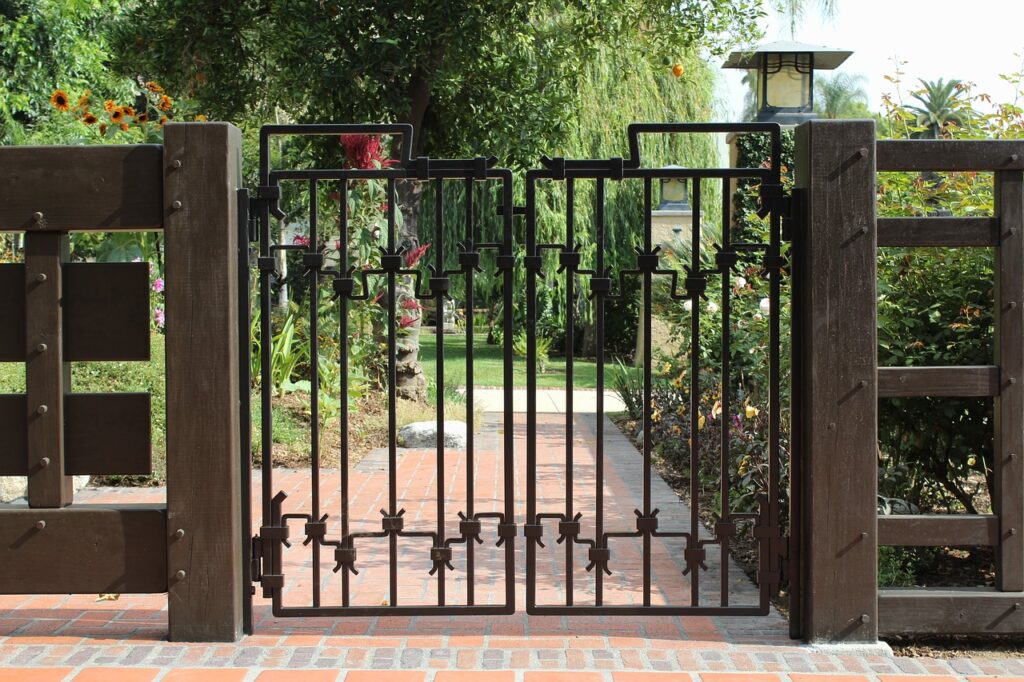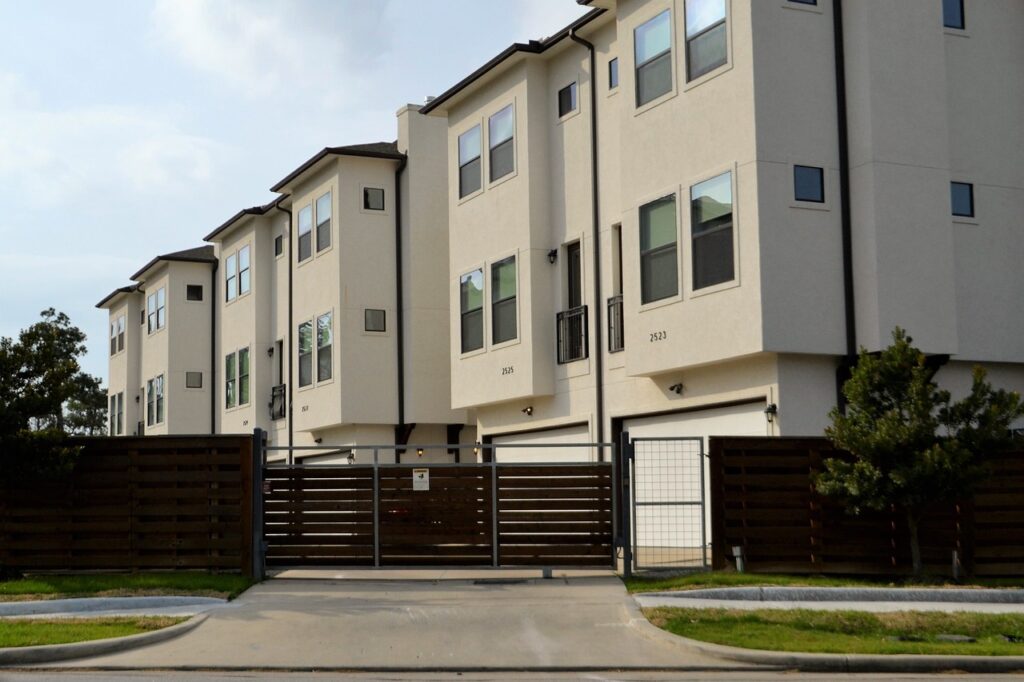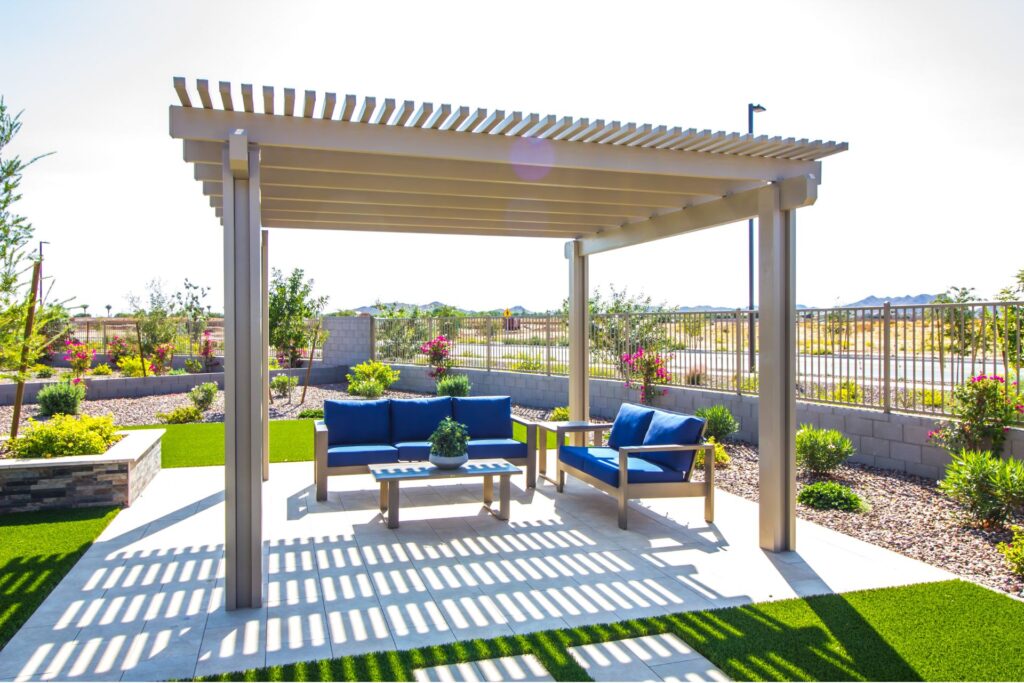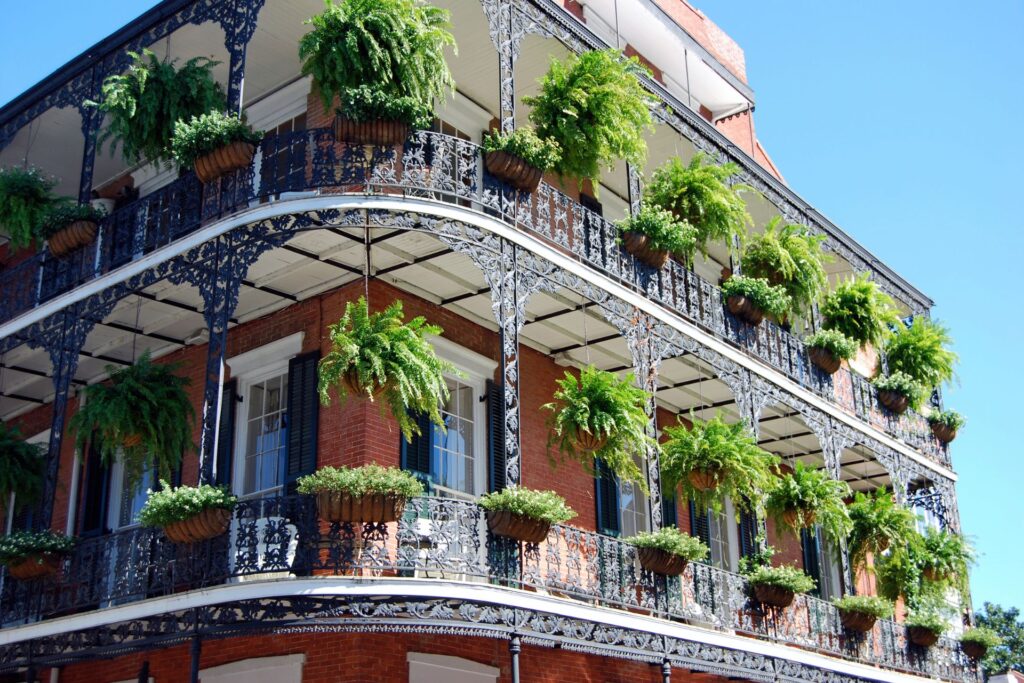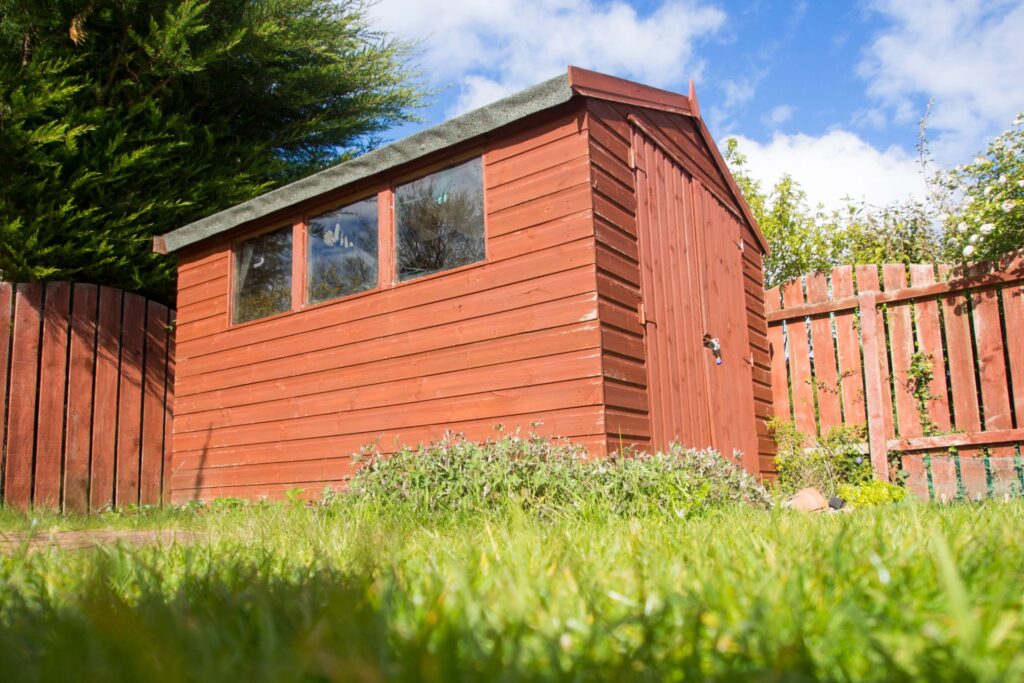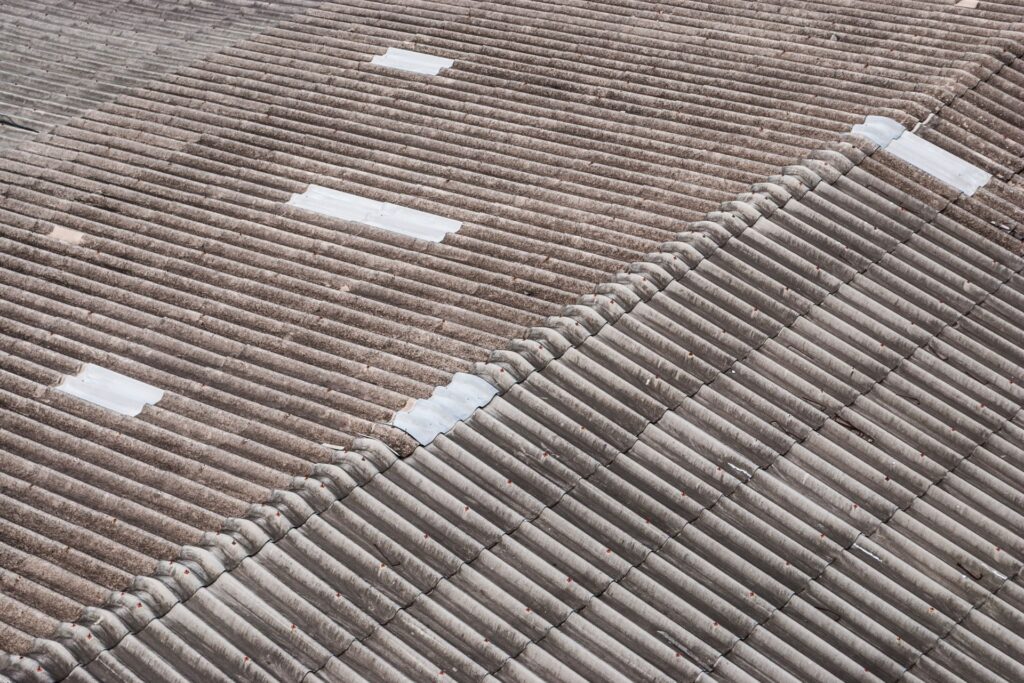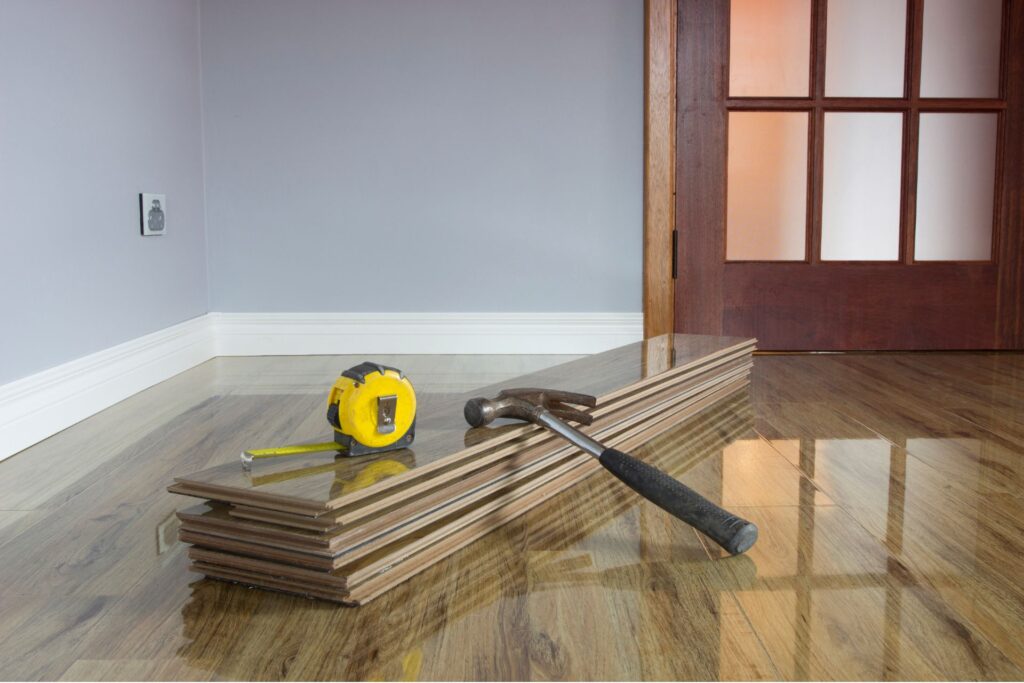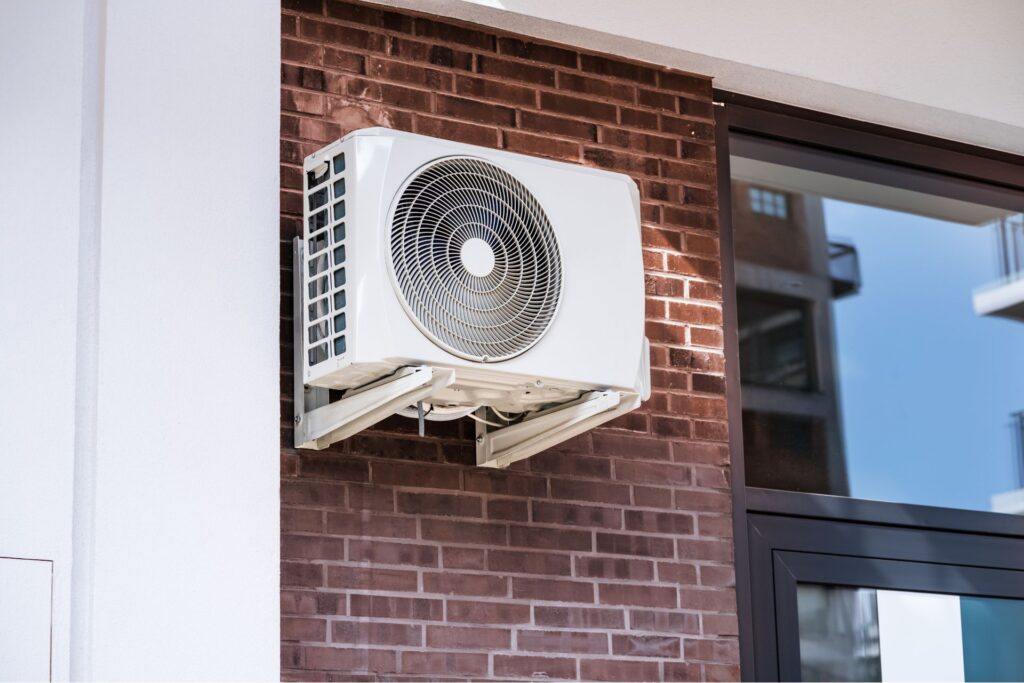Welcome to your ultimate guide on understanding the standard driveway gate width in New Zealand. Whether you’re planning to enhance your home’s security, boost its curb appeal, or simply make your driveway more functional, choosing the right gate width is a crucial step in the process. In this blog post, we’ll dive into everything you need to know about driveway gate widths, from typical measurements to important factors that influence your decision, such as vehicle size, driveway layout, and local regulations. By the end of this guide, you’ll be well-equipped to make an informed choice that perfectly suits your needs and complements your property.
The standard driveway gate width in New Zealand typically ranges from 3 to 4 meters, providing adequate space for most residential vehicles. The exact width you choose should consider factors such as vehicle size, driveway layout, and local regulations to ensure optimal functionality and compliance.
- Understanding The Basics Of Driveway Gates
- Standard Driveway Gate Widths In New Zealand
- Factors To Consider When Choosing Your Driveway Gate Width
- Choosing The Right Material And Design For Your Gate
- Installation And Maintenance Tips For Your Gate System
- Cost Considerations And Budgeting For Driveway Gates
- Real-Life Examples And Case Studies Of Driveway Gate Width Decisions
- FAQs: About Standard Driveway Gate Width In NZ
- Conclusion
- Find A Professional Fencing Company Near You!
Understanding The Basics Of Driveway Gates
What is a Driveway Gate
A driveway gate is more than just a decorative feature for your property—it’s a crucial element that enhances security, privacy, and curb appeal. In essence, a driveway gate is a physical barrier installed at the entrance of your driveway, designed to control access to your property. These gates serve multiple purposes, from safeguarding your home against unauthorized entry to adding an extra layer of style to your home’s exterior.
Driveway gates come in various styles and functionalities to suit different needs and preferences. Swing gates are a popular choice, typically opening inward or outward like a door. Sliding gates, on the other hand, glide horizontally along a track, making them ideal for properties with limited space. Another important distinction is between automated gates and manual gates. Automated gates offer the convenience of remote operation, often equipped with sensors, keypads, or smartphone integration, while manual gates require physical effort to open and close but tend to be less expensive upfront.
Why Width Matters
When it comes to driveway gates, the width is a critical factor that shouldn’t be overlooked. The width of your gate directly impacts its functionality, your vehicle access, and the overall aesthetic harmony with your property. A gate that’s too narrow can lead to frustrating access issues, especially if you drive larger vehicles like SUVs, trucks, or have frequent visitors with similar vehicles. On the other hand, a gate that’s too wide might seem out of proportion with your property, detracting from its visual appeal.
Choosing the correct gate width involves considering several practical aspects. First, think about the types of vehicles that will use the driveway. Larger vehicles require more space not just for passing through, but also for turning and maneuvering into the driveway. Failing to account for this can lead to costly mistakes, such as damage to the gate or your vehicle, and could require expensive modifications later on.
Another common mistake homeowners make is underestimating the turning angles needed when entering and exiting the driveway. This is particularly important if your driveway isn’t a straight shot from the street, as tighter angles require more clearance. A well-proportioned gate that matches the scale of your driveway and property will not only function better but will also enhance the overall look and feel of your home’s exterior.
A driveway gate isn’t just a functional barrier, it’s a significant design element that requires careful planning, especially when it comes to width. Ensuring your gate is the right size will save you from potential headaches down the line and contribute positively to your property’s security, convenience, and aesthetic value.
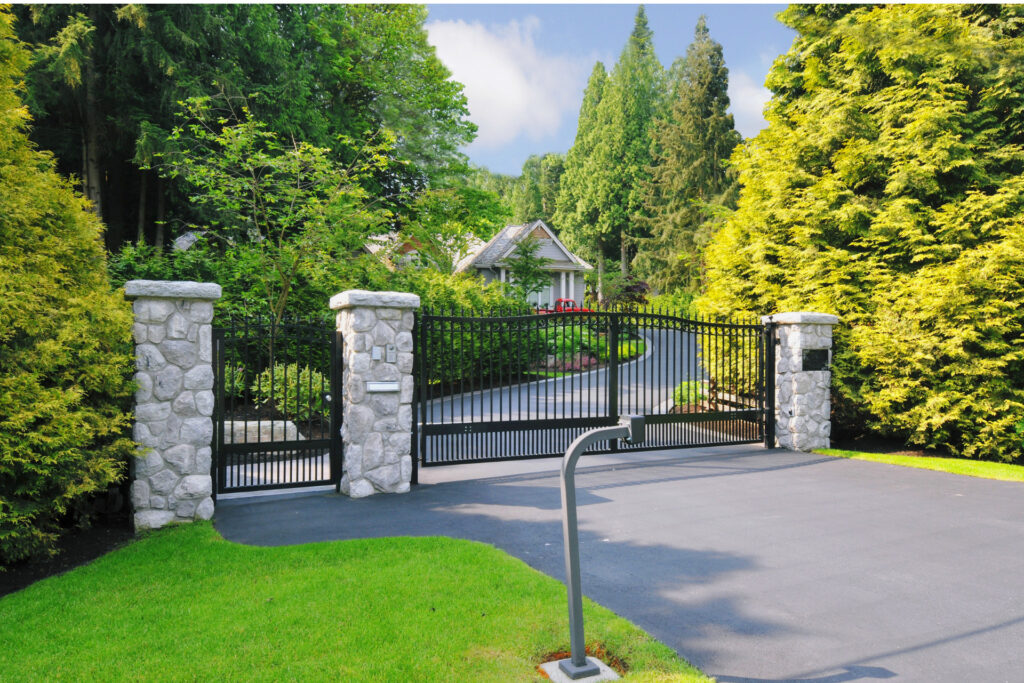
Standard Driveway Gate Widths In New Zealand
When planning to install a driveway gate in New Zealand, understanding the standard widths available is essential. The gate’s width not only impacts the overall appearance of your property but also its functionality and compliance with local regulations. In this guide, we’ll explore the typical width ranges for driveway gates, the factors influencing these choices, and the importance of adhering to regulatory requirements.
Typical Width Ranges for Driveway Gates in New Zealand
In New Zealand, driveway gates are commonly available in several standard widths, catering to a range of property types and vehicle sizes. The most prevalent width options include.
- 3 meters (approximately 9.8 feet)
- 3.5 meters (approximately 11.5 feet)
- 4 meters (approximately 13.1 feet)
These widths are widely chosen to accommodate the standard sizes of residential vehicles and provide sufficient clearance for safe entry and exit. A 3-meter gate is generally suitable for single-vehicle driveways, offering enough space for cars to pass through comfortably. On the other hand, larger widths, such as 3.5 meters and 4 meters, are better suited for properties with wider driveways or those that need to accommodate larger vehicles like SUVs, trucks, or multiple cars.
Factors Influencing Standard Gate Widths
Several factors determine the appropriate driveway gate width for a property in New Zealand. The key considerations include.
- Vehicle Size: The dimensions of the vehicles regularly using the driveway are crucial. Larger vehicles require wider gates to ensure easy maneuverability without the risk of damage to the gate or vehicle.
- Property Size: The overall size and layout of the property can dictate the appropriate gate width. Larger properties with expansive driveways may benefit from wider gates, while smaller properties may find a standard 3-meter gate more fitting.
- Regional Building Regulations: Local building codes and council regulations can influence the choice of gate width. Some regions may have specific guidelines or restrictions on gate sizes, especially in areas with heritage listings or unique zoning requirements.
Regulatory Considerations for Driveway Gates in New Zealand
When installing a driveway gate in New Zealand, it is essential to be aware of any local regulations or council requirements that might apply. Each council may have its own set of rules governing the installation of driveway gates, particularly concerning safety, height, and placement. For example, gates that open onto a public road might have restrictions to prevent obstructing traffic or pedestrian pathways.
Before proceeding with the installation, homeowners should consult their local council or a professional installer to ensure that their chosen gate complies with all relevant regulations. Failing to adhere to these rules could result in fines or the need to alter or remove the gate after installation.
Custom vs. Standard Widths
When selecting a driveway gate, homeowners must decide between choosing a standard width or opting for a custom size. Each option has its pros and cons, depending on the specific needs and preferences of the property owner.
- Standard Widths
- Pros:
- Cost-effective: Standard-sized gates are generally more affordable as they are mass-produced.
- Readily Available: Easier to source and quicker to install.
- Cons:
- Limited Design Flexibility: May not perfectly fit unique property layouts or specific aesthetic preferences.
- Pros:
- Custom Widths
- Pros:
- Tailored Fit: Can be designed to suit specific property dimensions or design requirements.
- Enhanced Functionality: Ideal for properties with unique access needs or unusual driveway shapes.
- Cons:
- Higher Cost: Custom gates are usually more expensive due to the bespoke manufacturing process.
- Longer Lead Time: Custom designs may take longer to produce and install.
- Pros:
Homeowners might consider a custom gate width if their driveway has an unusual shape or if they need to accommodate special vehicles, such as boats or caravans. Additionally, custom gates can offer a unique design that enhances the property’s curb appeal, adding a personalized touch that standard gates might not provide.
Choosing the right driveway gate width in New Zealand involves balancing practical considerations, aesthetic preferences, and regulatory requirements. Whether opting for a standard or custom width, it’s crucial to ensure that the gate serves its functional purpose while enhancing the overall look of the property. Consulting with professionals and checking local regulations will help ensure a smooth installation process and long-term satisfaction with your driveway gate choice.
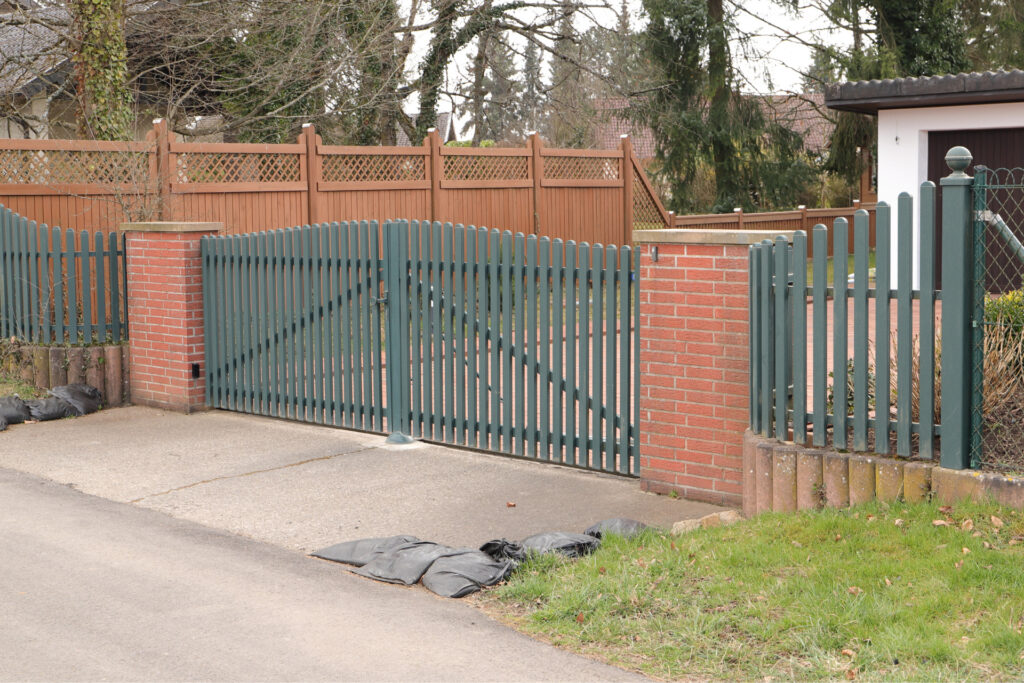
Factors To Consider When Choosing Your Driveway Gate Width
Selecting the right width for your driveway gate is a critical decision that can impact both the functionality and aesthetics of your property. Several key factors must be considered to ensure your gate not only fits your current needs but also accommodates future changes. Here’s a detailed look at the most important considerations.
Type of Vehicles
One of the most significant factors to consider when choosing your driveway gate width is the type and size of vehicles that will regularly use the driveway. If you own larger vehicles like SUVs, family cars, trucks, or even boats and trailers, you’ll need to account for their width and turning radius when determining the gate size.
For instance, a standard sedan might comfortably pass through a 10-foot gate, but larger vehicles, such as an SUV or a pickup truck, could require a wider gate potentially 12 feet or more to navigate safely without risking damage. Additionally, if you frequently tow trailers or boats, a wider gate is essential to accommodate the extra width and maneuvering space needed.
When considering the size of the vehicles, it’s also essential to factor in any additional space required for side mirrors, especially on larger trucks or vans. By considering these vehicle-specific requirements, you can ensure that your gate is wide enough to provide a smooth and safe passage every time.
Driveway Layout and Space Constraints
The layout and available space of your driveway play a crucial role in determining the optimal width of your gate. If your driveway is situated on a narrow urban lot or has limited frontage, you may be restricted in how wide your gate can be. In these cases, maximizing the available space becomes key to ensuring easy vehicle access.
For properties located on sloping terrain, special considerations are needed. The incline or decline of the driveway can affect the ease with which vehicles can pass through the gate. A steeper slope might require a wider gate to accommodate vehicles approaching at an angle, as this can make the entry and exit points more challenging to navigate.
Additionally, the shape of the driveway whether it’s straight, curved, or includes tight turns can influence your gate width decision. A curved driveway, for example, may necessitate a wider gate to allow vehicles to make the turn without clipping the gate posts. Properly assessing the layout and space constraints ensures that your gate complements your driveway design, providing both functionality and ease of use.
Traffic Flow and Usage Patterns
Understanding the daily traffic flow and usage patterns of your driveway is essential when choosing your gate width. If your driveway sees heavy traffic, such as multiple family members coming and going throughout the day or frequent visitors, a wider gate can prevent bottlenecks and make entering and exiting the property smoother.
In scenarios where multiple vehicles may need to pass through the gate simultaneously, such as a two-car household, a wider gate becomes even more crucial. For example, a gate that can only accommodate one car at a time could lead to frustrating delays if both vehicles need to enter or exit at the same time. A double-swing gate or a sliding gate with sufficient width can alleviate these issues, allowing for smoother traffic flow and reducing the risk of accidents or damage.
Additionally, if your property often hosts large gatherings or events, where many vehicles need to pass through in a short period, having a gate wide enough to handle this increased traffic can be a significant convenience. This consideration ensures that your gate is not only functional for everyday use but also capable of handling peak traffic efficiently.
Future-Proofing Your Choice
When deciding on the width of your driveway gate, it’s wise to think about the future. Your needs today might not be the same as your needs five or ten years down the road. For instance, you might purchase a larger vehicle, such as an RV or a new truck, or you might remodel your property, altering the layout of your driveway. By opting for a slightly wider gate now, you can avoid the need for costly modifications later.
Future-proofing your gate width also includes considering the possibility of adding additional features to your gate, such as automation systems, which might require extra space for installation. A wider gate allows more flexibility in incorporating these features without compromising on the ease of vehicle access.
Moreover, as the trend towards larger vehicles continues, even if you currently own smaller cars, planning for the possibility of larger vehicle ownership in the future can save you from potential headaches. Investing in a wider gate now can also enhance the overall value of your property, making it more attractive to potential buyers who may appreciate the extra space and convenience.
Choosing the right width for your driveway gate involves a careful consideration of current and future vehicle types, driveway layout, traffic flow, and long-term needs. By taking the time to assess these factors, you can select a gate that not only meets your immediate requirements but also serves you well into the future.
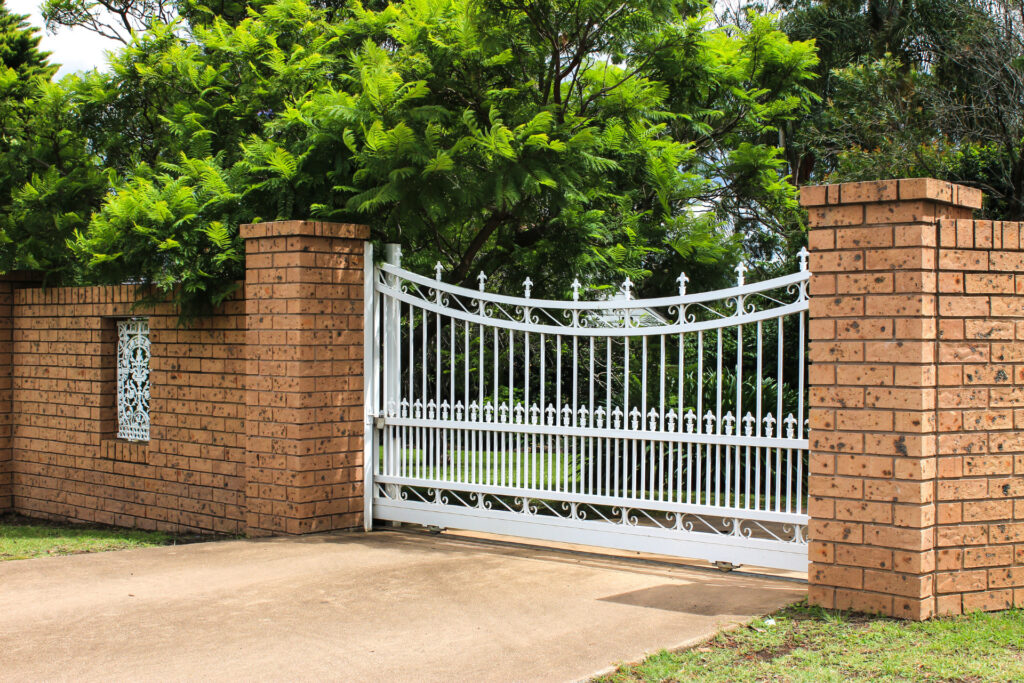
Choosing The Right Material And Design For Your Gate
When it comes to enhancing the security and aesthetics of your property, choosing the right gate is crucial. In New Zealand, homeowners have a variety of materials and designs to choose from, each with its own set of advantages and considerations. This guide will help you navigate the options to find the perfect gate for your needs.
Common Materials Used in NZ
In New Zealand, several materials are commonly used for gate construction, each offering unique benefits and drawbacks.
- Wood
- Pros: Wood is a classic choice that offers a natural, timeless look. It’s highly customizable and can be painted or stained to match the exterior of your home. Wood gates also provide excellent privacy.
- Cons: However, wood requires regular maintenance to prevent rotting, warping, and insect damage. Over time, the cost of maintenance can add up, making wood less economical in the long run.
- Durability: Moderate, with proper care.
- Aesthetics: Versatile; can range from rustic to sophisticated.
- Metal
- Pros: Metal gates, including those made from steel, are known for their strength and durability. They offer a sleek, modern appearance and can be powder-coated to resist rust and corrosion.
- Cons: Depending on the type of metal, these gates can be heavy and may require professional installation. Over time, if not properly treated, they can be susceptible to rust.
- Durability: High, especially with regular maintenance.
- Aesthetics: Modern, industrial, or elegant, depending on the finish.
- Wrought Iron
- Pros: Wrought iron gates are incredibly durable and can be intricately designed, adding a touch of elegance and sophistication to your property. They are highly resistant to damage and wear.
- Cons: These gates are typically more expensive and require occasional maintenance to prevent rust. Their open design may not offer as much privacy as other materials.
- Durability: Very high.
- Aesthetics: Classic, ornate, and elegant.
- Aluminum
- Pros: Aluminum is lightweight, rust-resistant, and requires minimal maintenance, making it a popular choice for modern homes. It’s also more affordable than wrought iron or steel.
- Cons: While durable, aluminum is not as strong as steel or wrought iron and may dent more easily. It’s also less customizable in terms of intricate designs.
- Durability: High, with minimal maintenance.
- Aesthetics: Sleek and modern, ideal for contemporary designs.
Design Considerations
The design of your gate plays a significant role in both the functionality and curb appeal of your property. Here are some key factors to consider.
- Solid vs. Slatted Design
- Solid Gates: Offer maximum privacy and security, as they fully block the view into your property. However, they can create a more imposing look and might make the space appear smaller.
- Slatted Gates: Provide a balance between privacy and openness, allowing light and air to pass through while still offering security. They can make a property feel more spacious and less confined.
- Modern vs. Traditional Design
- Modern Gates: Often feature clean lines, minimalist designs, and materials like metal or aluminum. They are perfect for contemporary homes that favor simplicity and elegance.
- Traditional Gates: Typically include more intricate details, such as scrollwork in wrought iron or classic wood paneling. These designs are ideal for homes with a more classic or rustic aesthetic.
- Functionality vs. Curb Appeal
- While a gate should be functional, providing security and ease of use, it’s also important that it complements the overall design of your property. A well-designed gate can significantly enhance your home’s curb appeal, making it more attractive and potentially increasing its value.
Automation and Technology Integration
As technology advances, more homeowners are opting for automated gates. Automation offers the convenience of opening and closing your gate with the touch of a button, often from a remote control or smartphone app. This is particularly beneficial for larger gates or in bad weather when manual operation would be inconvenient.
- Smart Home Integration: Modern automated gates can be integrated with smart home systems, allowing you to control your gate alongside other home functions like lighting and security cameras. This not only adds a layer of convenience but also enhances the overall security of your property.
- Impact on Design and Width: The inclusion of automation technology may influence the design and width of your gate. For instance, sliding gates may be preferred over swinging ones in automated systems to save space and ensure smoother operation. Additionally, the width of the gate must accommodate the necessary automation hardware without compromising on style or security.
Choosing the right material and design for your gate in New Zealand involves considering various factors, from the durability and maintenance of the material to the aesthetics and functionality of the design. Whether you’re leaning towards a traditional wooden gate or a modern, automated metal gate, the key is to find a balance that suits your home’s style and your personal needs. By carefully weighing these options, you can select a gate that not only enhances the security of your property but also adds to its overall appeal.
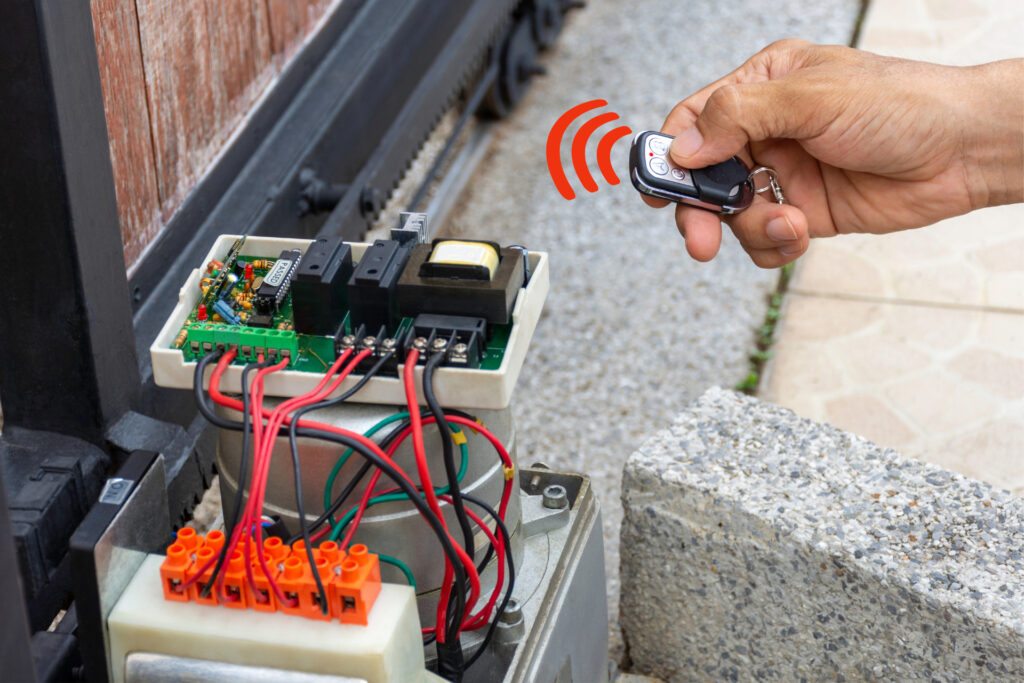
Installation And Maintenance Tips For Your Gate System
Professional Installation
When it comes to installing a gate system, the importance of professional installation cannot be overstated. Proper installation is crucial not just for the functionality of your gate, but also for the safety and security of your property. A professional installer brings the expertise needed to take precise measurements, ensuring that your gate fits perfectly within your space. This precision is vital, especially when considering the width of the gate, which must accommodate both the available space and the specific needs of your property.
Before hiring an installer, it’s important to ask a few key questions to ensure you’re making the right choice. Start by asking about their experience with similar projects. Have they installed gates of your desired width before? It’s also essential to discuss the layout of your property. The installer should assess the terrain and potential obstacles that could affect the installation. Make sure to ask how they plan to address these challenges. By asking these questions, you can be confident that your gate will be installed correctly, maximizing its functionality and lifespan.
Ongoing Maintenance
Once your gate is installed, ongoing maintenance is key to ensuring its long-term performance. Regular maintenance not only helps in keeping the gate functional but also prevents costly repairs down the line. One of the most critical aspects of gate maintenance is ensuring that the width and alignment remain consistent. Over time, natural wear and tear or external factors such as weather can cause shifts that may affect the gate’s operation.
To maintain your gate, start with routine checks. For instance, if your gate is automated, regularly inspect the automated system to ensure it is working smoothly. Tracks should be kept clear of debris to prevent any obstructions that could interfere with the gate’s movement. Additionally, lubricating moving parts can help reduce friction and prevent premature wear.
Given New Zealand’s unique climate, it’s also important to consider seasonal adjustments. For example, during wet seasons, tracks can become clogged with mud or leaves, requiring more frequent cleaning. In colder months, the gate’s mechanisms might need extra attention to prevent freezing or sticking. By staying on top of these maintenance tasks, you can ensure your gate continues to operate efficiently, regardless of the weather.
Both professional installation and regular maintenance are essential for the optimal performance of your gate system. By hiring a skilled installer and committing to ongoing upkeep, you’ll ensure that your gate remains a secure and reliable feature of your property for years to come.

Cost Considerations And Budgeting For Driveway Gates
When planning to install a driveway gate, understanding the cost considerations and budgeting effectively are crucial. The cost of a driveway gate can vary widely based on several factors, each influencing the overall investment required. Here’s a detailed breakdown of these cost factors, along with tips on managing your budget while ensuring quality and functionality.
Factors Influencing Cost
The total cost of a driveway gate is shaped by a combination of factors, each playing a significant role in determining the final price tag.
- Size of the Gate
- The size of your driveway gate is one of the primary cost drivers. Larger gates require more materials and labor, leading to higher costs. A double-wide gate designed to accommodate larger vehicles or a grand entrance will naturally cost more than a single, standard-sized gate.
- Materials Used
- Wrought iron and steel: gates tend to be more expensive due to their durability and the craftsmanship involved in their design.
- Wooden gates: offer a classic appeal but may require more maintenance over time, affecting long-term costs.
- Aluminum gates: are typically more affordable and resistant to rust, making them a cost-effective option.
- Design Complexity
- The complexity of the gate’s design also influences cost. Simple, functional designs will be less expensive compared to gates with intricate details, custom scrollwork, or ornate patterns.
- If your gate is a focal point of your property’s curb appeal, investing in a more elaborate design may be worthwhile, but it will raise the overall cost.
- Automation Features
- Adding automation to your driveway gate, such as electric openers, remote access, intercom systems, or security cameras, will increase the cost.
- While automation adds convenience and enhances security, it’s important to weigh these benefits against the added expense.
- Consider the long-term savings and convenience that automation might offer, such as avoiding the need to manually open the gate in bad weather.
Standard vs. Custom Gate Costs
Another critical decision that impacts cost is whether to opt for a standard-sized gate or to go custom.
- Standard Gates
- These are pre-fabricated gates available in common sizes and designs. Opting for a standard gate is typically more affordable, as manufacturers produce them in bulk, reducing costs.
- Standard gates are easier to install and often come with a shorter lead time, making them a cost-effective choice for those with a limited budget or time constraints.
- Custom Gates
- Custom gates are designed to meet specific dimensions and aesthetic preferences. While they offer the perfect fit and unique design tailored to your property, they are more expensive.
- The higher cost is due to the bespoke nature of the gate, requiring more time and resources to produce.
- Custom gates are ideal if your driveway has unique dimensions or if you desire a specific style that reflects your personal taste.
Balancing Budget Constraints with Quality and Functionality
While it’s important to manage costs, it’s equally essential not to compromise on quality and functionality. Here are some tips to balance your budget effectively.
- Prioritize Your Needs
- Determine what’s most important for your driveway gate. Is it security, aesthetic appeal, or ease of use? Prioritizing your needs will help you allocate your budget more effectively.
- Consider Long-Term Costs
- Sometimes, investing a bit more upfront can save money in the long run. For example, a durable material like steel or a reliable automation system might be more expensive initially but could reduce maintenance and repair costs over time.
- Mix and Match Features
- You don’t have to go all out on every aspect of your gate. Consider choosing a simpler design but opting for high-quality materials or basic automation features that can be upgraded later.
- Get Multiple Quotes
- Always seek quotes from several manufacturers or contractors. This allows you to compare prices and find the best deal without sacrificing quality. Look for reviews or testimonials to ensure that the lower cost does not mean lower quality.
- Plan for the Future
- If your budget is tight, you might install a manual gate now with the option to add automation later. This phased approach allows you to spread out the costs while still achieving your desired outcome over time.
The cost of a driveway gate is influenced by various factors, including size, materials, design complexity, and automation features. Deciding between a standard or custom gate is another key consideration that can impact your budget. By carefully evaluating your priorities and considering long-term costs, you can find a balance between your budget constraints and the quality and functionality you need in a driveway gate.

Real-Life Examples And Case Studies Of Driveway Gate Width Decisions
When selecting the perfect driveway gate for your property, the width of the gate is a crucial factor that can dramatically influence both the functionality and aesthetics of your entrance. To help you understand how this decision plays out in real life, let’s dive into two distinct case studies that illustrate different approaches to gate width. We’ll also explore before-and-after scenarios to highlight the impact these changes can make.
Case Study 1: Urban Property with Limited Space
- Scenario Overview: Imagine a homeowner living in a densely populated urban area where space is at a premium. Their driveway is narrow, surrounded by other homes, and every inch of space must be used wisely. The homeowner originally had a standard-sized gate, but it was cumbersome and made it difficult to navigate the tight space. To address this issue, the homeowner decided to install a narrower gate.
- Adjustments Made: The primary concern with choosing a narrower gate was ensuring that it would still be functional while enhancing the overall look of the property. The solution involved selecting a custom-designed gate that was both stylish and practical. The gate was made slightly narrower than standard to accommodate the tight space, but with smart engineering and design, it still allowed enough room for vehicles to pass through without hassle.
To enhance functionality, the gate was automated, enabling it to open fully even in the restricted space. Additionally, the design incorporated vertical bars that gave an illusion of height, making the property feel more expansive than it actually was. The final touch was matching the gate’s color and materials to the existing fencing, creating a cohesive look that blended seamlessly with the urban landscape.
- Outcome: The narrower gate proved to be a success. It not only maximized the limited space available but also added a modern, sleek aesthetic to the property. The automated function was a game-changer, providing convenience and ease of use in a challenging urban environment. Overall, the adjustment in gate width helped transform the homeowner’s entrance, making it more functional and visually appealing.
Case Study 2: Rural Property with Larger Vehicles
- Scenario Overview: In contrast, let’s consider a rural property where space is abundant, and the homeowner frequently needs to accommodate larger vehicles such as trailers, boats, and farm equipment. The existing driveway gate was standard-sized, which posed a significant challenge when maneuvering large vehicles in and out of the property. The homeowner decided that a wider gate was essential to meet their needs.
- Adjustments Made: The wider gate required careful planning to ensure it would fit well within the rural setting and still be functional. The homeowner opted for a double-swing gate design, which allowed for a much wider entrance without sacrificing structural integrity. This design also provided the flexibility to open just one side of the gate for smaller vehicles or both sides when larger access was needed.
To accommodate the weight and size of the gate, robust materials were chosen, such as heavy-duty steel with a rustic finish that complemented the rural environment. The gate was also equipped with an automatic opener, making it easy to operate even when hands are full or in inclement weather.
- Outcome: The installation of the wider gate dramatically improved access for large vehicles, eliminating the frustration of tight turns and limited space. The new gate also enhanced the property’s overall aesthetic, giving it a grander, more welcoming entrance that fit perfectly with the open landscape. The homeowner now enjoys both the practicality and the visual appeal of the wider gate, making it a worthwhile investment.
Before and After Comparisons
The decision to change the width of a driveway gate can have a profound impact on both the look and functionality of a property. Below are a few before-and-after examples that highlight these changes.
- Before: A narrow, single-panel gate on an urban property, making it difficult for larger vehicles to enter and exit. The gate’s style was outdated, clashing with the modernized home exterior.
- After: The property was transformed with a custom, narrower double-panel gate that matched the home’s contemporary style. The new gate provided smoother access while enhancing the property’s curb appeal.
- Before: A rural property with a standard-width gate struggled with accommodating large farm vehicles and trailers. The gate’s design was too modest for the vast, open surroundings.
- After: A new, wider double-swing gate was installed, allowing ample room for large vehicles. The gate’s design featured a rustic finish, perfectly blending with the rural landscape and providing a more impressive entrance.
Choosing the right width for your driveway gate is more than just a practical consideration; it can also greatly influence the overall appearance and convenience of your property. Whether you’re working with limited space in an urban area or need to accommodate larger vehicles in a rural setting, the right gate width can make all the difference. These real-life examples and before-and-after comparisons underscore the importance of thoughtful planning and design in making the best choice for your property.
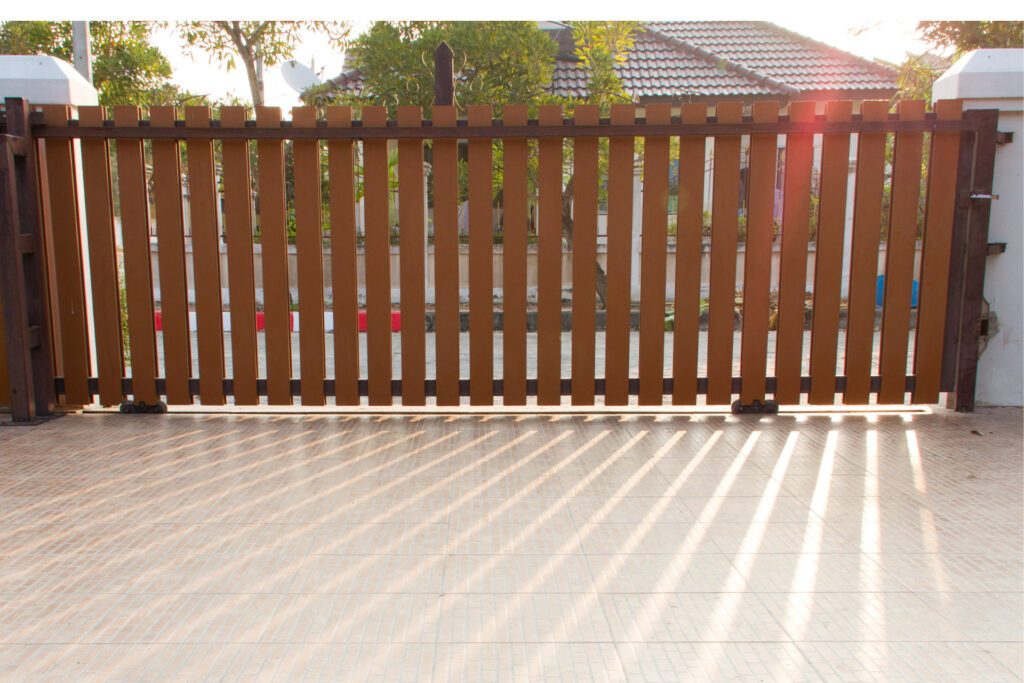
FAQs: About Standard Driveway Gate Width In NZ
Conclusion
In conclusion, selecting the appropriate gate width for your driveway is crucial for both functionality and aesthetics. Throughout this post, we’ve highlighted key considerations, including the dimensions of your vehicles, the layout of your property, and the need for future-proofing against potential changes. Ensuring your gate is wide enough not only facilitates easy access but also enhances the overall curb appeal of your home. A final tip is to take the time to plan carefully and consult with professionals who can provide tailored advice based on your specific needs. For those ready to take the next step, we encourage you to reach out for a consultation or explore the wide range of options available for your driveway gate project, ensuring your investment adds value and convenience to your property.
Find A Professional Fencing Company Near You!
- Farm Fencing Waikato
- Fence Builders Alexandra, Clyde & Cromwell
- Fence Builders Auckland
- Fence Builders Central Otago
- Fence Builders Christchurch
- Fence Builders Hamilton Waikato
- Fence Builders Invercargill
- Fence Builders Kapiti
- Fence Builders Lower Hutt
- Fence Builders Manawatu
- Fence Builders Palmerston North
- Fence Builders Queenstown
- Fence Builders Taupo
- Fence Builders Upper Hutt
- Fence Builders Wanaka
- Fence Builders Wellington
- Fencing Contractors Levin
- Fencing Contractors Napier
- Fencing Hastings
- Fencing Hawkes Bay
- Fencing Kerikeri
- Fencing Mangawhai
- Fencing Nelson
- Fencing New Plymouth
- Fencing Paihia
- Fencing Taranaki, New Plymouth
- Fencing Warkworth
About the Author:
Mike Veail is a recognized digital marketing expert with over 6 years of experience in helping tradespeople and small businesses thrive online. A former quantity surveyor, Mike combines deep industry knowledge with hands-on expertise in SEO and Google Ads. His marketing strategies are tailored to the specific needs of the trades sector, helping businesses increase visibility and generate more leads through proven, ethical methods.
Mike has successfully partnered with numerous companies, establishing a track record of delivering measurable results. His work has been featured across various platforms that showcase his expertise in lead generation and online marketing for the trades sector.
Learn more about Mike's experience and services at https://theleadguy.online or follow him on social media:


